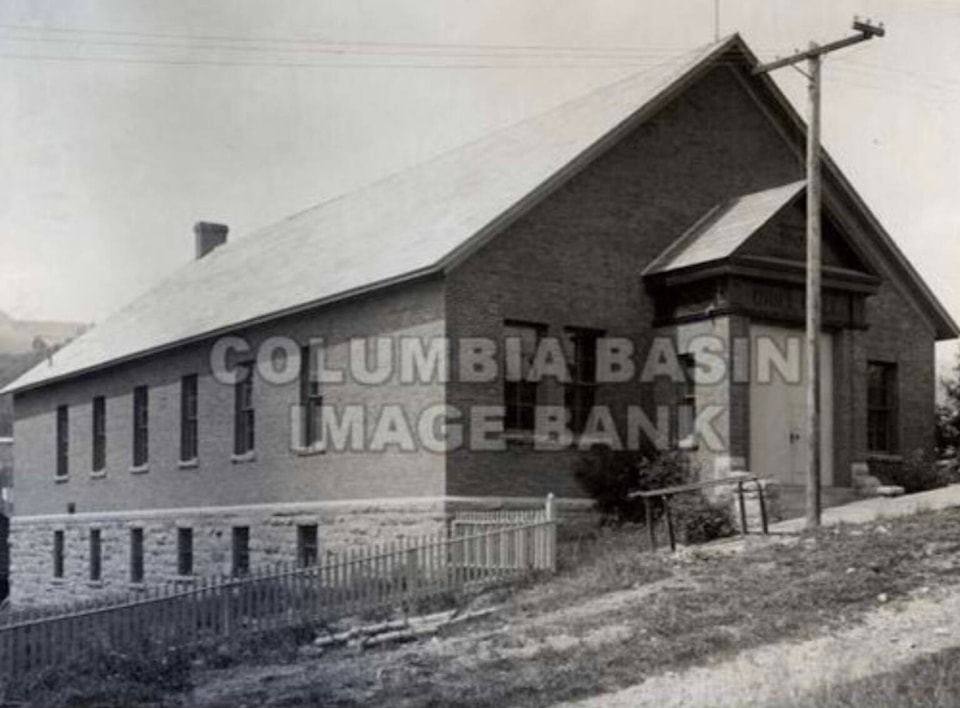With $1,500 in hand from Heritage BC, the Rossland Arts Centre Society (Society) is moving ahead with planning for a new arts hub in the Rossland Drill Hall.
“We have all sorts of work to do before this becomes a reality, but funding from the Heritage Legacy Fund will get us one step closer,” Society director, Sarah Taekema-Slot, told the Trail Times.
The next step involves the hiring of an architectural historian to conduct a heritage assessment of the Drill Hall, thereby establishing its historical significance and informing of a conservation plan.
Taekema-Slot says a local architectural historian is willing and qualified to do the work, which will include four phases:
1) research the origins of the site as a building type;
2) research and document the socio-political forces that resulted in the commissioning and construction of the Drill Hall;
3) conduct a site visit to inventory and document the existing structure; and
4) prepare an illustrated narrative that establishes the heritage significance of the Rossland Drill Hall.
Background
The Rossland Arts Centre Society is in the final stages of taking over the management of Rossland’s historic Drill Hall as a long-term tenure from the Crown. The Society intends to operate this historic building as an arts centre and community hub and fill a significant gap in programmable space. As tenure-holders, the Society believes that it is important to understand and respect this historic building, which is why an assessment of the Drill Hall by an architectural historian is key to determine its heritage significance. Unfortunately the current Statement of Significance does not include any reference material so information cannot be verified by this means. The heritage assessment will provide verifiable and updated information, which will contribute to the community’s understanding of the Drill Hall. The goal is to expand public awareness of a more nuanced version of the city’s history as a site of significance for the intersection of British Law and American union militarism, ensuring the Society can make responsible and informed decisions about renovations and use of the space.

Rossland Drill Hall
The Rossland Drill Hall, also referred to as the Armories or Annex, was built in 1904 by David Ewart, Chief Dominion Architect for the Ministry of Defense.
Built largely in response to the Boer War, (South African War 1899-1902) the Drill Hall became the largest indoor recreation building in Rossland for the first half of the 20th century due to a large training area on the upper floor, and a well fortified space beneath for weapons storage.
The building is a strong reminder of the region’s connection to the British Empire and the Canadian Military, being home to different groups including the Rocky Mountain Rangers. The building has also served other purposes, such as housing the Rossland Legion from 1919 to 1945, and twice functioning as a school after fires destroyed Central School in 1912 and MacLean School in 1981.
Architecturally, the Drill Hall is noteworthy, boasting a locally-quarried granite base and a floor made of eucalyptus wood — a rarity for B.C. buildings back then. The structure still has the original copper roof tiles, each tile is embossed with a maple leaf. The building continues to play a role of prominence due to its history of use, though it is currently not open to the public.
- with files from RosslandMuseum.ca
Read more: Rossland’s long history of names
Read more: Rossland history in pictures
newsroom@trailtimes.ca
Like us on Facebook and follow us on Twitter
About the Heritage Legacy Fund
The Heritage Legacy Fund was established as an endowment by the Province of British Columbia in 2003 and is held by the Vancouver Foundation and administered by Heritage BC. The fund is a self-sustaining private endowment fund that relies on the donations and bequests of donors. With a recent deposit of $5 million from the Province of BC, the fund’s current valuation is over $13 million.
The Heritage Legacy Fund supports a financial assistance program for Heritage Awareness, Heritage Conservation, and Heritage Planning. These grant funds are used for community initiatives that conserve and increase the understanding and appreciation of heritage resources. Heritage resources may include existing heritage buildings, structures, sites, cemeteries, districts, cultural landscapes, or intangible heritage such as language and customs.
The Heritage Legacy Fund also supports Indigenous Partnership projects. These grant funds are used to support communities and heritage organizations in working towards reconciliation with Indigenous peoples through collaboration.
The education, programming and public awareness programs and resources provided by Heritage BC also benefit from the Heritage Legacy Fund.
